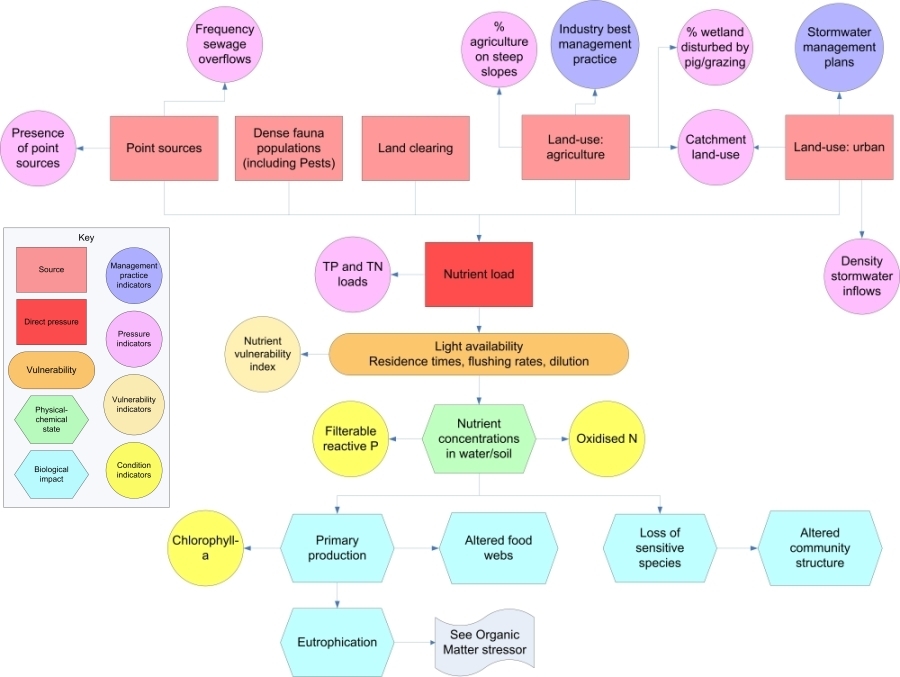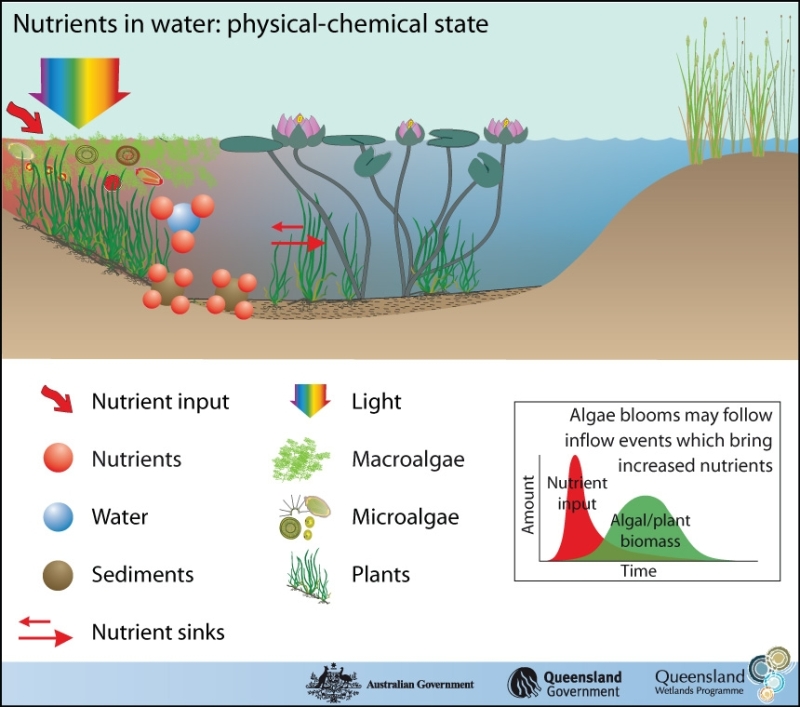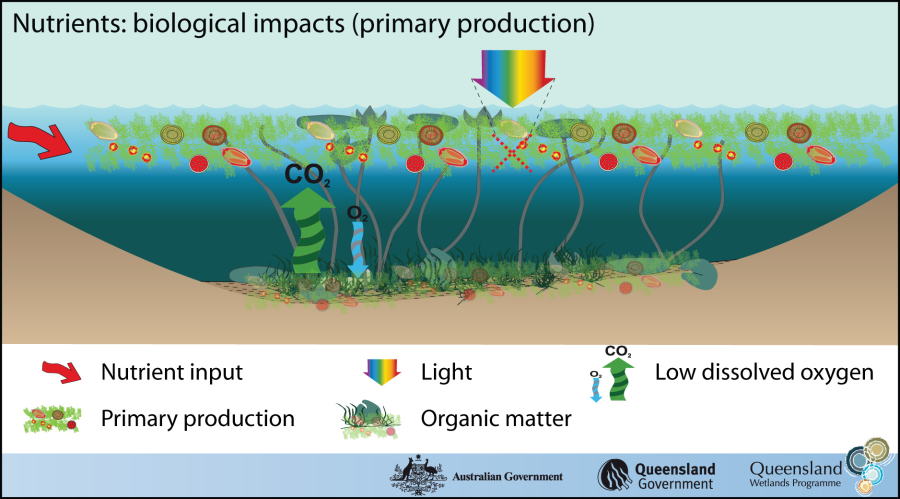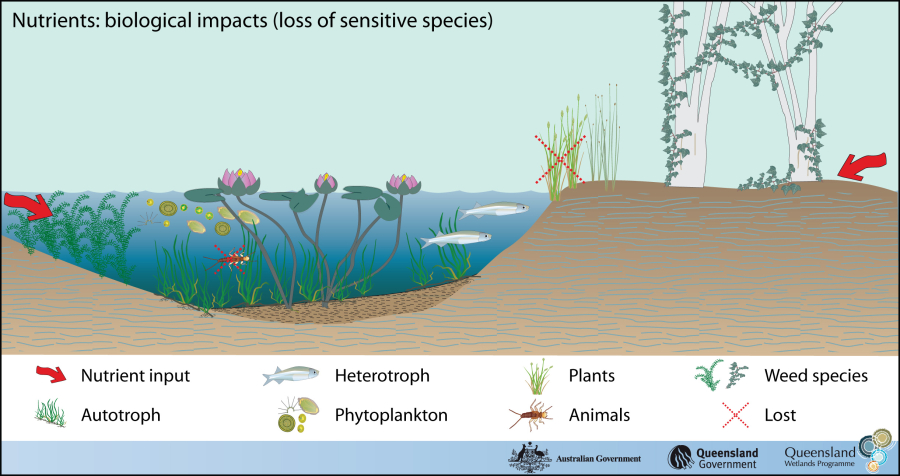|
|
Nutrients – StateNutrients – StateFlow chart showing the major elements associated with nutrient management
Click on elements of the flow chart or select from the tabs below
Nutrients are transported in the water column and are stored in sediments and plants/algae. Algal (both macroalgae and microalgae) blooms and increased plant growth occur in areas with increased nutrients and high light availability. Plants and algae can act as nutrient sinks as they remove nutrients from the water. In wetlands that experience stratification and resultant low dissolved oxygen levels in deeper water, nutrients can be released from the sediments in significant quantities.
Nutrient rich water entering a wetland may result in increased primary production which, in turn, may alter the light conditions for submerged aquatic plants, sometimes to the point where they cannot survive. This may lead to a complete change in the ecology of the wetland from one dominated by submerged macrophytes to one dominated by phytoplankton. This has numerous flow-on effects on the biota of the wetland. The death of submerged plants leaves a large pool of organic matter to be decomposed, greatly reducing dissolved oxygen levels.
Nutrient rich water entering a wetland may result in a change in the food web structure from allochthonous to autochthonous and a change in autotroph and heterotroph biomass. Changes in phytoplankton species composition, size structure and growth rates may occur and plants or animals sensitive to nutrients may be lost. Higher nutrient levels may also increase the growth and successful invasion of weed species.
Last updated: 22 March 2013 This page should be cited as: Department of Environment, Science and Innovation, Queensland (2013) Nutrients – State, WetlandInfo website, accessed 8 May 2025. Available at: https://wetlandinfo.des.qld.gov.au/wetlands/management/pressures/lacustrine-palustrine-threats/nutrients/state.html |

 — Department of the Environment, Tourism, Science and Innovation
— Department of the Environment, Tourism, Science and Innovation





